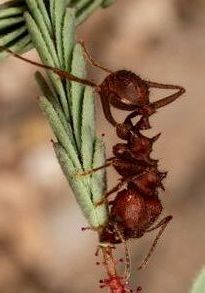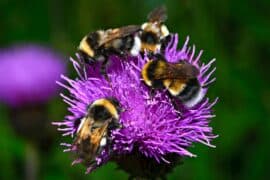Acromyrmex striatus
(Acromyrmex striatus)

Description
Acromyrmex striatus is a species of the leaf-cutter ants found in the Neotropics. It is a member of the subfamily Myrmicinae, and within the tribe Attini. As an attine, Acromyrmex striatus forages for vegetation that will be applied to the fungal garden, typical in all leaf-cutting species. The fungus is fed the mycophagous larvae and queen, while workers are nourished primarily by the sap of cut plants, and very little by the mutualistic fungus making them respectively, phytophagous, and mycophagous. The presence of leaf-cutter ants is so common in the Neotropics, that they are considered to be the main herbivores of these areas., A. striatus is a polymorphic species, meaning that there are several different sizes of workers, with the largest being 6.5 mm long. This is done to compartmentalize a variety of tasks so they can be done efficiently. A. striatus is most commonly found in the southern states of Santa Catarina and Rio Grande do Sul in Brazil, and also the countries of Argentina, Uruguay, and Paraguay. At least in Argentina, it prefers nest sites in arid and semi-arid areas, where the sun can shine on it all year. A. striatus is an opportunistic forager, collecting material from all available sources. These ants may cut directly from plants, they may scavenge materials that have already fallen, or they may even collect feces or carcasses of other arthropods. In fact, researchers have found that at least 53 different species of plants are collected by A. striatus, from 23 families, the majority being Compositae, Gramineae, and Leguminosae. However, in terms of foraging area, A. striatus generally keep to grasses and shrubs., Foraging takes place only on days with a temperature of greater than 20 °C., This means that in more temperate climates, foraging is restricted to a few hours a day, and only during summer. It has been documented that A. striatus demonstrates a "resource conservation strategy", which theorizes that workers will choose to forage farther away from the nest to avoid overexploitation of resources closer to home. This would result in target resources having a chance to regrow before being collected again. It has been hypothesized that the driving force behind this behavior is that the ants are concerned with obtaining high quality materials. It seems that A. striatus is accomplished at providing its mutualistic fungus with a steady and predictable supply of nourishment.
Taxonomic tree:







